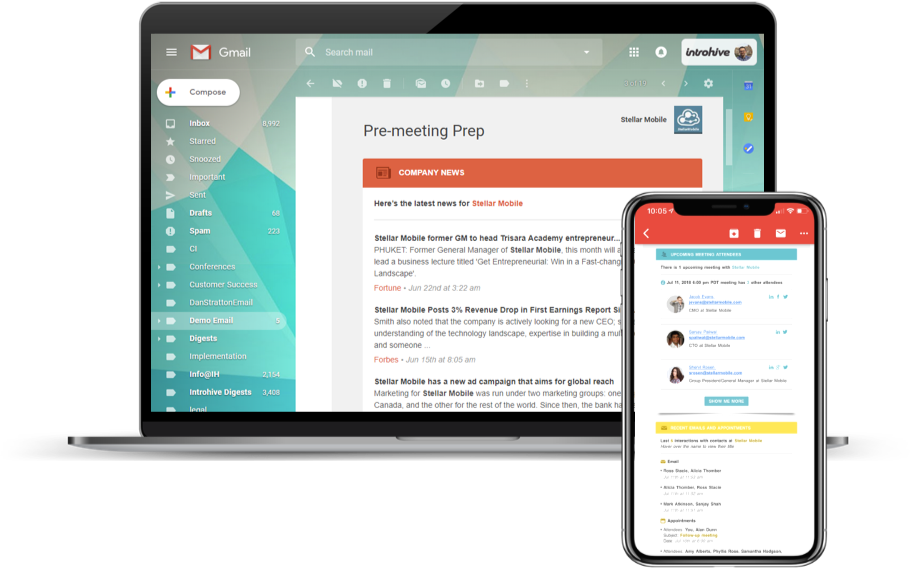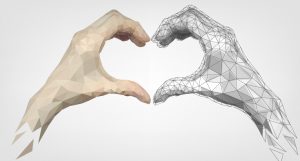How AI-powered technology innovations have made ERM software more valuable than ever before.
Personal interactions versus automated transactions: Which is more likely to propel your business into the future? Both, actually.
Today’s buyers expect more from their customer experience. Indeed, they care about how you treat them almost as much as product quality and price. But the challenge here is that while your organization might excel at one-on-one service, making every customer feel like the most valuable customer can be tough. It’s a level of service scaling that requires a depth of knowledge not easily parsed from the dark recesses of your customer relationship management (CRM) system or an individual’s memory.
Thankfully, today’s modern enterprise relationship management (ERM) software solutions provide organizations of all types and sizes the ability to track, access, evaluate, and share information about not just customers, but also employees, suppliers, and business partners, too.
Technological advances have made ERM software easier to use—and more valuable—than ever before. And newer ERM platforms work as either a standalone tool or an add-on software to your CRM or another system.
Read on to learn more about what’s new with enterprise relationship management, and why you shouldn’t sleep on advances in ERM technology.
Artificial Intelligence Powers ERM
Today’s leading ERM applications, like Introhive, are powered by artificial intelligence (AI) and machine learning. So, firms that use them not only benefit from deep relationship insights, they also get a boost in productivity.
ERM software pools internal and external data to create an accurate picture of the strength and lifetime value of client relationships at an organizational level, answering questions such as:
- Which employees have the strongest connections with clients and business partners?
- How do clients use a product or service?
- What are clients’ preferred payment and delivery methods?
- Which trends in employee behavior impact productivity, satisfaction, and retention?
- Which client relationships are the strongest, and which are at risk?
In essence, AI can improve the quality of customer relationship data and provide the intelligence that firms need to develop more successful business plans and strategies.

ERM Solutions with AI Automate Time-Consuming Processes
Business professionals lose as much to 5.5 hours per week on data entry, time that could be spent on higher-value activities. When data automation is baked into modern ERM solutions, this responsibility shifts away from employees. So, not only are you saving time, you’re boosting productivity and morale.
And ERM does a lot more than just automate the data collection process. Indeed, firms can also automate the visualization of key relationship data and distribution of actionable insights. For instance, tools like Introhive automatically deliver relationship analytics directly to the inboxes of business development and account representatives before client meetings.
This effortless access to key relationship intel makes it much easier for harried, on-the-go sales and business development professionals to provide personalized experiences to prospects and customers.
And, if you’re concerned about sacrificing quality for convenience, you don’t need to be. Data automation actually improves the quality of insights about employees, clients, business partners, and even competitors.
In fact, pulling data from sources you use daily, such as email signatures, meeting invites, and social media profiles, is proven to reveal richer, more accurate relationship information.
Smart Algorithms Predict & Help Prevent Client Risk
You can prevent 81 percent of customer churn by improving relationships. But when a massive 96 percent of dissatisfied clients don’t ever complain and simply move on, how can you know when relationships need improving?

Well, chances are the client did express their unhappiness. They might not have told you to your face, but perhaps they stopped responding to meeting requests or emails. This is where modern ERM solutions can help you synthesize data you might not have even realized you had, using algorithms to identify factors that may signal a change in relationship strength, such as a drop-off in correspondence, an increase in unopened emails, or the transition of a critical stakeholder.
As an added benefit, some systems, like Introhive, will email alerts about concerning relationship trends, making it even easier for organizations to be more proactive about customer happiness and retention at the first sign of deterioration.
Relationship Maps are Blueprints for Business Growth
So many cross-industry challenges stem from the same issue: a lack of visibility into the complexities of business relationships. But when you have a modern ERM system on your side, that can visualize those connections via relationship mapping, a host of barriers to growth fall away.
For just one example, too often client relationships are heavily dependent on a single relationship pairing, leaving organizations open to significant risk. Insights from today’s AI-powered ERM solutions allow you to focus attention on the relationships that will make the biggest difference both in the short- and long-term. For example, you may discover that you need to nurture more C-level contacts with a specific client as your connections are too heavily weighted within middle management.

If your most pressing need is a wider breadth of your company’s representation within a client, ERM can help with that too. The software enables effective bi-directional communication, information sharing, and collaboration by centralizing all critical data on all contacts. In addition, relationship mapping ensures each member of your firm can easily identify and leverage the connections that exist between your firm and a customer.
Evolve Your Approach to Enterprise Relationship Management
For any business, enhanced customer experiences are the key to long-term growth. ERM software enables the capture, storage, and evaluation of vital client data that has the power to drive stronger relationships and business results. And now, thanks to AI-powered relationship intelligence, firms can have the benefit of a robust ERM—at any time from any device—without tedious upkeep.
Business & Finance Articles on Business 2 Community
(61)
Report Post








